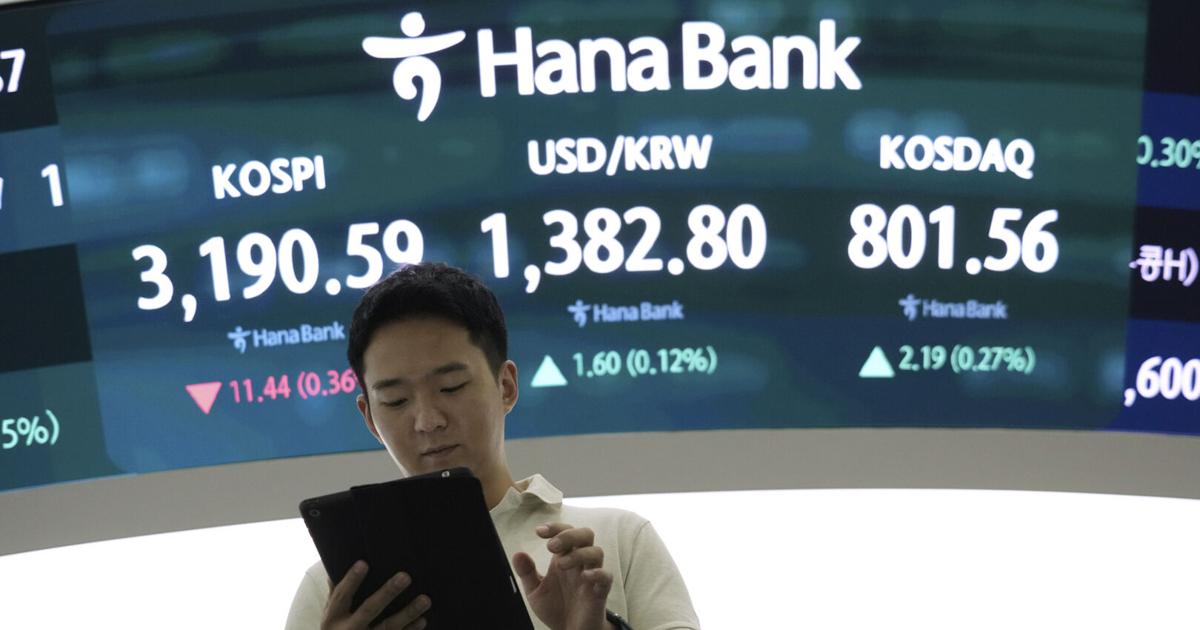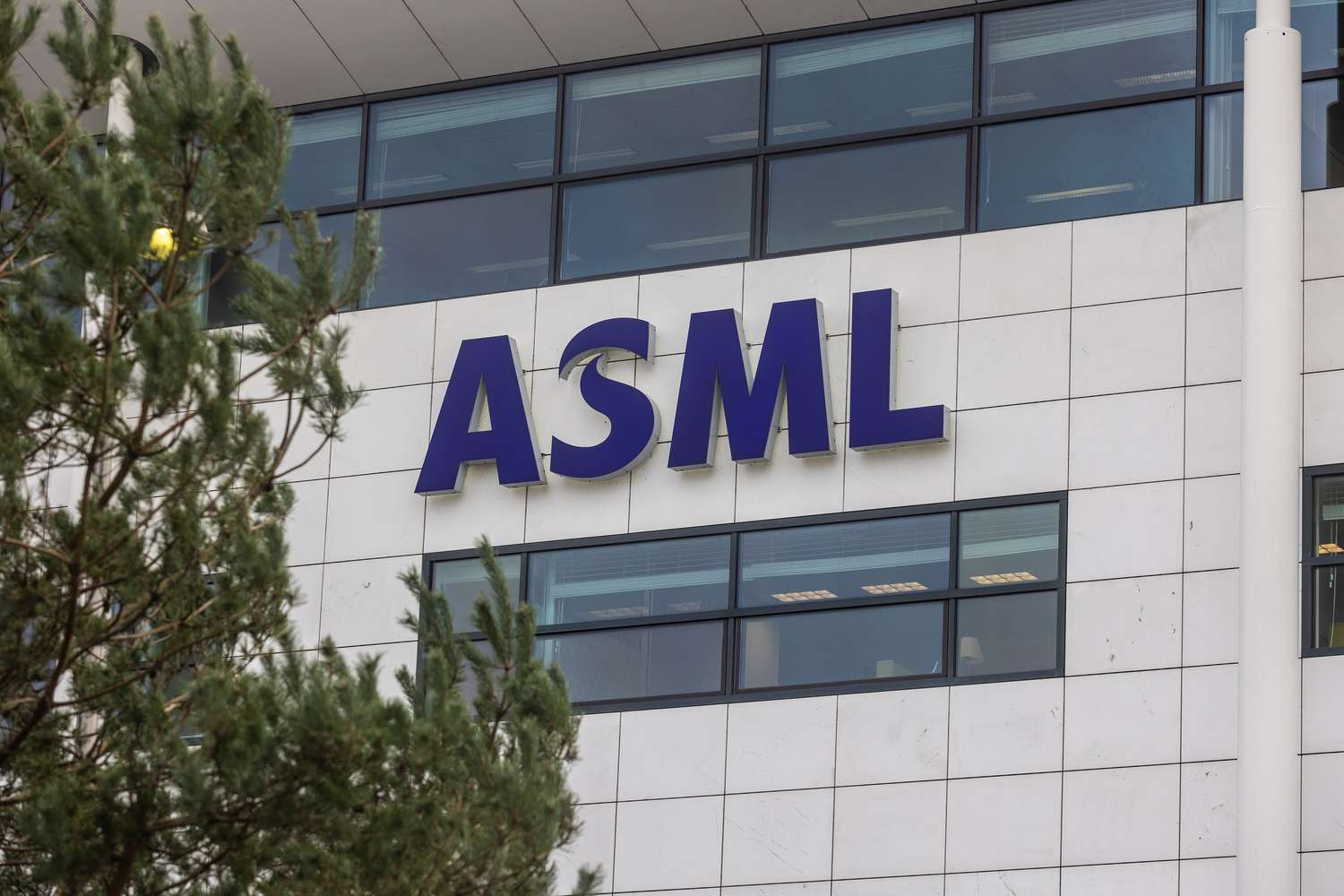The White House’s tariffs have been well received, Donald Trump told Kristen Welker, of NBC News, last week, adding that the stock market had just hit a new high. Trump was right about the market, but he didn’t mention why investors were bidding up the S. & P. 500 and Nasdaq to unprecedented levels despite his threats, yet again, to impose punitive tariffs of up to fifty per cent on goods imported from all over the world: they don’t believe he’ll ever go through with it. Or, as the acronym that has become an article of faith on Wall Street goes, “TACO”—Trump always chickens out.
After Trump first announced his global tariffs with great fanfare, in the Rose Garden, on April 2nd, the value of stocks, bonds, and the U.S. dollar plummeted. Within a week, he announced a three-month pause on his most punitive levies, which ranged up to fifty per cent. Trump’s adviser Peter Navarro said the Administration would use the ninety-day extension to make ninety new trade deals. When the period came to an end last week, just two deals had been reached—with the U.K. and Vietnam—and those were only rough outlines. Rather than let the tariffs kick in, Trump postponed them again, this time to August 1st. He also told reporters that this new deadline may be “not one-hundred-per-cent firm.” TACO, TACO, TACO. That, at least, is Wall Street’s take.
“I don’t care about tariffs any more,” Max Kettner, an investment strategist at the bank HSBC, told the Financial Times last week. “What’s to stop them saying, let’s give it another three months?”
Wall Street’s cynicism is understandable. But, from vantage points elsewhere in the U.S. economy, especially those directly involved in international trade, the outlook is less reassuring. Trump hasn’t retreated from imposing all of the tariffs—far from it. A levy of ten per cent is now in effect for virtually all foreign-produced goods, except smartphones, some other electronic goods, and semiconductors. Items from China face a minimum tariff of thirty per cent, and that rate will surely go higher if the two sides can’t finalize a trade deal, the outlines of which were seemingly agreed upon in May. On Friday, the Treasury Department said revenues from tariffs jumped to $27.2 billion last month, bringing the total for the fiscal year so far to more than a hundred and thirteen billion dollars.
Then there are the industry-by-industry tariffs that Trump has introduced or raised, such as levies of twenty-five per cent on autos and auto parts, and fifty per cent on steel and aluminum. Last week, he announced a fifty-per-cent duty on copper, a metal used in the production of power lines, water pipes, roofing, electric circuits, refrigerators, data centers, electric-vehicle batteries, and more. On the U.S. futures markets, the price of copper for delivery in the coming months shot up to a record high. Firms that make or sell copper items are about to see a big increase in their costs, as are many other businesses that import components or finished goods.
Among Trump’s latest salvos, delivered in letters to individual countries and groupings, are threats to impose tariffs of thirty per cent on items from Mexico and the European Union, and a levy of fifty per cent on goods from Brazil—a country with which the U.S. runs a trade surplus—as punishment for its government’s treatment of its former leader, and accused coup plotter, Jair Bolsonaro. But, even if some of Trump’s latest threats turn out to be empty, the over-all average effective tariff rate has risen from 2.4 per cent at the end of the Biden Administration to 15.8 per cent, according to Yale’s Budget Lab. That’s the highest it has been since the Great Depression. If Trump’s threats do go into effect on August 1st, the effective rate will rise to eighteen per cent, the Budget Lab calculates.
So far, higher tariffs haven’t shown up much in economy-wide price indexes. That’s partly because many U.S. businesses ordered extra inventories of items likely to be tariffed before Trump’s policies went into effect. Also, some firms seem to be absorbing some of their extra costs in lower profit margins rather than passing them on to consumers, but economists and business executives warn this approach is unlikely to last. Last week, the C.E.O. of Hasbro, which sells many toys manufactured in Asia and Latin America, said prices could rise in the fall.
“I think that higher prices are coming even though the macro-data, through May, has not reflected that yet,” Michael Wolf, an economist at Deloitte Touche Tohmatsu Limited, a global professional-services firm, told me. “In a sense, that isn’t surprising. I wouldn’t have expected firms to pass on the higher costs immediately. But as time passes, and as inventories dwindle, there is only so long you can hold out.” Ian Shepherdson, the chairman of Pantheon Macroeconomics, agreed. “People are rushing to judgement far too soon,” he said, in an e-mail. When Trump raised tariffs in 2018, Shepherdson went on, it took three months for prices to start rising and another few months for the process to fully work through the economy. “Someone has to pay the tariffs, and there’s not much sign that exporters to the U.S. are carrying the can,” Shepherdson added.
Even as the stock market sails ahead largely undisturbed—prices did fall back a bit on Friday—the chaotic rollout of the tariffs has already dramatically heightened economic uncertainty and robbed the economy of some of the momentum that Trump inherited from the Biden Administration. In the aftermath of the COVID-19 pandemic, the U.S. economy experienced a stronger recovery than other advanced economies. In 2023 and 2024, inflation-adjusted G.D.P. expanded at an annual rate of 2.9 per cent and 2.8 per cent, respectively. Since then, growth has weakened appreciably.
In the first quarter of 2025, G.D.P. growth was slightly negative as consumer spending weakened, and imports surged as businesses front-ran the tariffs. (Imports don’t raise G.D.P., which measures goods and services produced in the United States.) The Commerce Department’s initial report on G.D.P. in the second quarter, which will be published on July 30th, seems likely to show a rebound to 2.6-per-cent growth on an annualized basis, according to the Atlanta Federal Reserve’s GDPNow model, which incorporates a broad range of economic statistics. Even if this prediction turns out to be correct, though, the economy will have lagged behind during the first half of the year. And Trump’s fixation with tariffs will be largely to blame.
What will happen from here? Economic forecasts often prove unreliable, but they can be useful for looking at different scenarios. In Deloitte’s latest forecast, which was published last month, the baseline case assumes that the average tariff rate stays at about fifteen per cent and the Fed holds off from cutting interest rates for a few more months. G.D.P. grows by 1.4 per cent in 2025, just half of last year’s rate. In 2026, growth remains depressed at 1.5 per cent, and the unemployment rate edges up to 4.6 per cent. (Last month, it was 4.1 per cent.)
The forecast also considered a more optimistic scenario, in which trade tensions ease, deals get done, and the average tariff rate falls to 7.5 per cent by December. In this case, growth this year is just 1.8 per cent, but it rebounds to 2.9 per cent next year, and the unemployment rate stays at around four per cent. Finally, Wolf and his colleagues examined a more pessimistic case, in which trade talks with China, the E.U., and other countries collapse, and the effective tariff rate rises to twenty-five per cent. Reprising what happened back in April, the bond market reacts negatively to these developments, and long-term interest rates increase, driving up the cost of mortgages and other loans. The economy falls into a recession, in which G.D.P. declines by 1.6 per cent next year, and unemployment rises to 5.7 per cent.
We can label these scenarios as bad, better than expected, and disastrous. Which one ends up most closely resembling reality depends largely on whether Trump really is the TACO Man or the Tariff Man. But, in any case, even the optimistic one, his quixotic effort to run a global economic superpower as if it were a prime beachfront hotel—if you want access to it, you must stump up—has already inflicted a good deal of unnecessary harm. Just don’t try explaining that to him. You’d be wasting your time. ♦


